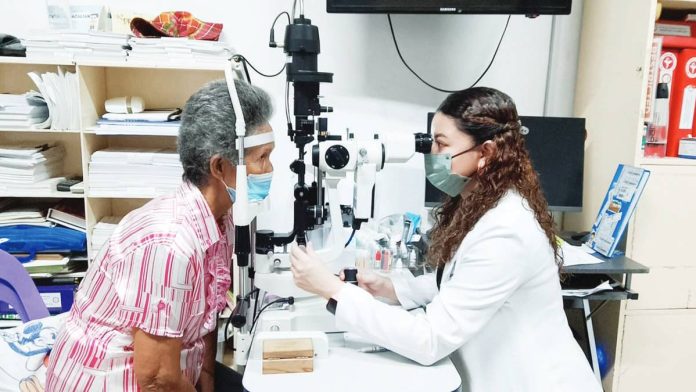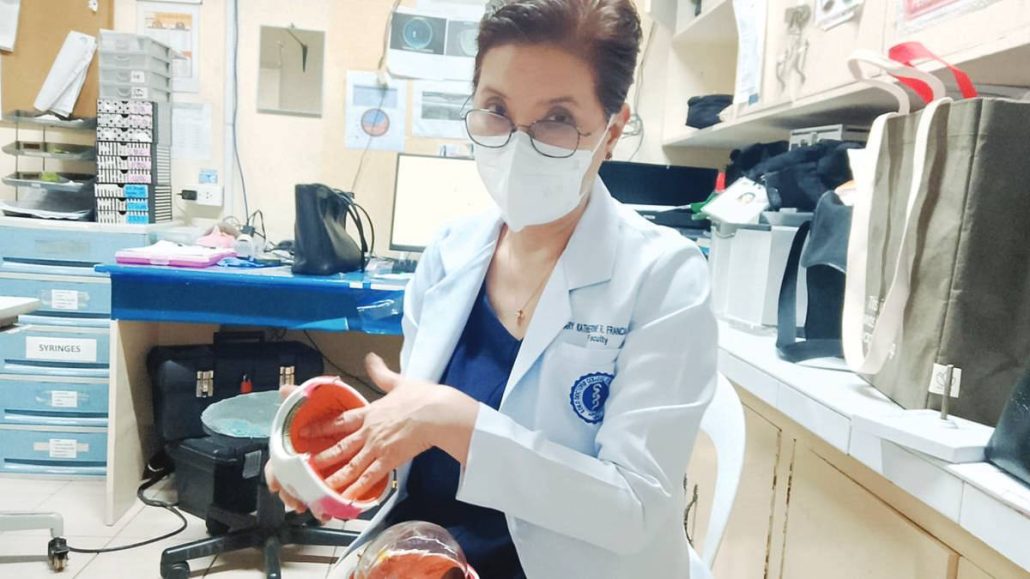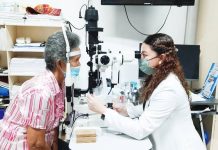
ILOILO City – While cataract remains the most common eye condition requiring surgery in Western Visayas, glaucoma is the “scarier” threat to vision because the blindness it causes is irreversible, according to a top ophthalmologist at the government-run Western Visayas Medical Center (WVMC) in Mandurriao district here.
“In our consultations, many patients present with cataract, glaucoma, diabetic retinopathy, and, particularly among younger males, trauma such as eye injuries from accidents or motorcycle incidents. But, when it comes to surgery, we perform cataract operations nearly every day,” said Dr. Mary Katherine Francia, head of WVMC’s Department of Ophthalmology.

From January to June this year alone, WVMC recorded 489 cataract surgeries.
Cataracts, described as a clouding of the eye’s lens, can develop with age, diabetes, or even congenitally in infants. The condition, however, is reversible with surgery.
“There is a lens behind our iris that is clear when we are born, allowing us to see clearly. However, as we age, this lens can become cloudy like milk. When it becomes cloudy, our vision can be impaired. If you have cataracts and the cloudy part is thick, it can significantly obstruct your ability to see,” Dr. Francia explained.
Blindness caused by cataracts, she added, can still be reversed.
“Even if a patient has been blind for 10 or 15 years due to cataracts, as long as the surgery is performed correctly, they can regain their sight. To use an electrical analogy, if a light bulb is broken, you simply replace the light bulb, and the light is restored.”
A WVMC eye patient gladly shared her experience.
“I couldn’t see but by the grace of God, after the cataract surgery, my vision returned. It is good,” said 70-year-old Lola Eruditha in Hiligaynon.
According to Dr. Erika Bicol, the ophthalmologist assigned to Lola Eruditha, the latter developed a cataract due to aging.
The Silent Danger of Glaucoma
Glaucoma, on the other hand, is a more dangerous condition. It damages the optic nerve — the link between the eyes and the brain — and once this nerve is impaired, vision loss is permanent.
“Glaucoma is quite common as we age, and the risk increases with time. However, it can also occur in younger individuals. Key risk factors for glaucoma include near-sightedness, diabetic retinopathy, a history of eye trauma, and a family history of the condition,” Dr. Francia said.
It is advisable for anyone with a first-degree relative who has glaucoma to have their eyes checked, even if they are just 40 years old.
“Since blindness caused by glaucoma is preventable, it is essential to schedule eye check-ups early,” Dr. Francia said.
She warned that glaucoma is “deceitful” because it often develops without symptoms until vision loss is advanced.
“While it’s not fatal, if it isn’t detected and treated early it can lead to blindness. You may still be alive, but you could lose your sight,” she stressed.
Using the same analogy, Francia added: “If the nerve is gone, there is no electricity, so even if you replace the light bulb, you still won’t be able to see.”
“Mas scary ang glaucoma kay kon blind ka na, irreversible na. Although sometimes gaopera kami even buron na just for pain control. Kay bal-an mo ang glaucoma gasakit na siya kay gasaka pressure inside the eyeball,” she explained.
Eye Health Beyond Cataracts and Glaucoma
WVMC’s outpatient department handled 27,522 eye consultations in 2024 and 2,671 in the first half of 2025.
Another WVMC eye patient, 52-year-old driver Adonis, told Panay News: “I couldn’t see clearly. My vision was blurry, especially when traveling at night. Now, after the cataract survery, my vision is much better. I can read.”
He emphasized the importance of taking care of the eyes “because our families depend on us. If our vision is good, we can move around and work effectively.”
Other common eye conditions include diabetic retinopathy, corneal lacerations, and microbial keratitis.
Francia noted that eye trauma is prevalent among children and young men.
“For instance, they’re playing with a sharp pencil and accidentally poked their eye. Or we’re riding a motorcycle and got into an accident that resulted in an eye injury,” she elaborated.
Dr. Francia advised parents to monitor their children closely, for workers to use proper protective gear, and for motorists to wear helmets to avoid preventable eye injuries.
“Vision plays a crucial role in our daily lives and overall well-being. I strongly encourage individuals to schedule regular eye examinations, even if they are not experiencing any noticeable symptoms. Early detection of potential issues can prevent more serious problems down the line, as vision is an essential aspect of how we interact with other people,” Dr. Francia emphasized./PN






